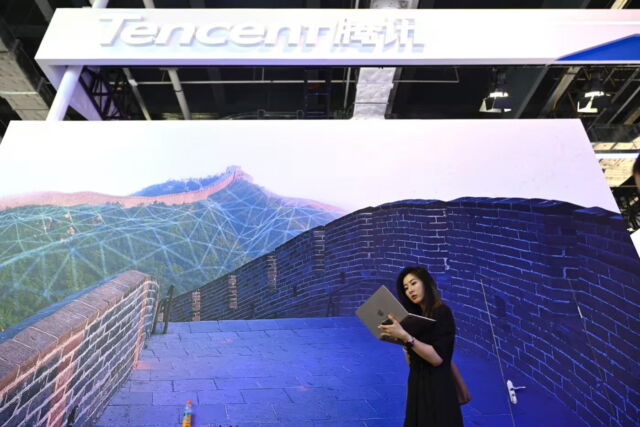At any cost
Chipmakers usually partner with chip design companies to test equipment and manufacturing processes in a new facility. So, for example, TSMC will collaborate with Apple on the chips produced on its 3 nm processing line.
For SMIC’s upgraded 7 nm production lines, Huawei was the guinea pig. But the handset maker brought revenue and validation for SMIC and played a crucial part in redefining several facets of the production line, according to three insiders familiar with the SMIC facilities. “Huawei’s engineers can be seen everywhere in SMIC’s Shanghai plant,” says one of them.
SMIC has also reached out for assistance outside the country. Americans are forbidden from working for Chinese advanced chip makers, due to export controls, but according to two chip engineers familiar with SMIC, it also employed experts from Taiwan, Japan, South Korea, and Germany in a bid to improve productivity.
“These overseas experts bring technical knowhow on advanced processes they gained from other foundries,” one of the engineers says.
“The 7 nm process has thousands of steps to improve,” says the second engineer. “Even in the wee hours of the morning, I had to answer the phone at the factory because it may concern one or two critical improvements.”
According to a source familiar with Huawei’s chip design team, when SMIC received the Kirin 9000S order, it did not have a team capable of assisting chip design engineers to adapt their designs to the process specification of different foundries. Huawei had to adapt on its own.
Production yields for the Kirin 9000S remain shrouded in mystery, with neither Huawei nor SMIC making any public statements on the matter. One person close to Kirin 9000S production in the early days says that the Kirin 9000S achieved yields of more than 30 percent during the risky volume production phase, the step before mass production.
The person describes that as a “positive number under tough conditions” but notes that it is “at least a two times increase in cost compared to a production line with a 90 percent yield, the ideal benchmark for the mobile chips fabrication.”
Industry experts believe Chinese state funding compensated for the excessive chip production costs. Huawei received Rmb6.55 billion ($948 million) from the Chinese government in 2022, more than double the amount the previous year, according to the company’s annual report. SMIC has received Rmb6.88 billion in state subsidies over the past three years, with additional support from the China Integrated Circuit Industry Investment Fund as a major shareholder.
“The Chinese state has apparently decided that footing the huge bill for this effort is worth it,” says Douglas Fuller, an expert on the China semiconductor industry.
Next stop, AI
The Kirin 9000S has made waves in China, allowing Huawei to reclaim lost market share. Industry experts predict it will increase production of smartphones powered by Kirin chips; Jeff Pu, an analyst at Haitong International Securities, estimates that up to 70 million Kirin-based smartphones could be manufactured by the end of 2024.
However, SMIC and Huawei have scaled up their ambitions, devising a plan to increase chip production for artificial intelligence systems in response to tightening restrictions imposed by Washington on high-performance chip sales to China.
Executives at Chinese Internet behemoths such as Tencent and Alibaba have acknowledged the difficulties they face in sourcing high-performance chips, leading them to consider local alternatives.
Huawei’s Ascend series of AI chips have been touted by industry analysts as potential replacements for Nvidia graphic processing units, even though their overall performance lags behind those from the US group.

Until sanctions were introduced in May 2020, Huawei sold Ascend AI chips made by TSMC. Now, multiple sources close to the company say it has revived the product lines, with newly designed data center chips manufactured by SMIC.
Three sources close to Huawei say Internet giants Tencent, Baidu, and Meituan have purchased Huawei Ascend 910b chips for small-scale trials. Two people close to SMIC say the chip factory is already working on expanding 7 nm production capacity for the pre-order Huawei chips and developing the more advanced 5 nm process node.
The Ascend 910b production target for next year has more than doubled compared to 2023, with more than 200,000 chips set to be produced, say the two people.
But there Huawei and SMIC must overcome some significant challenges in the manufacturing process for data center chips before they can start taking market share from Nvidia.
reader comments
197